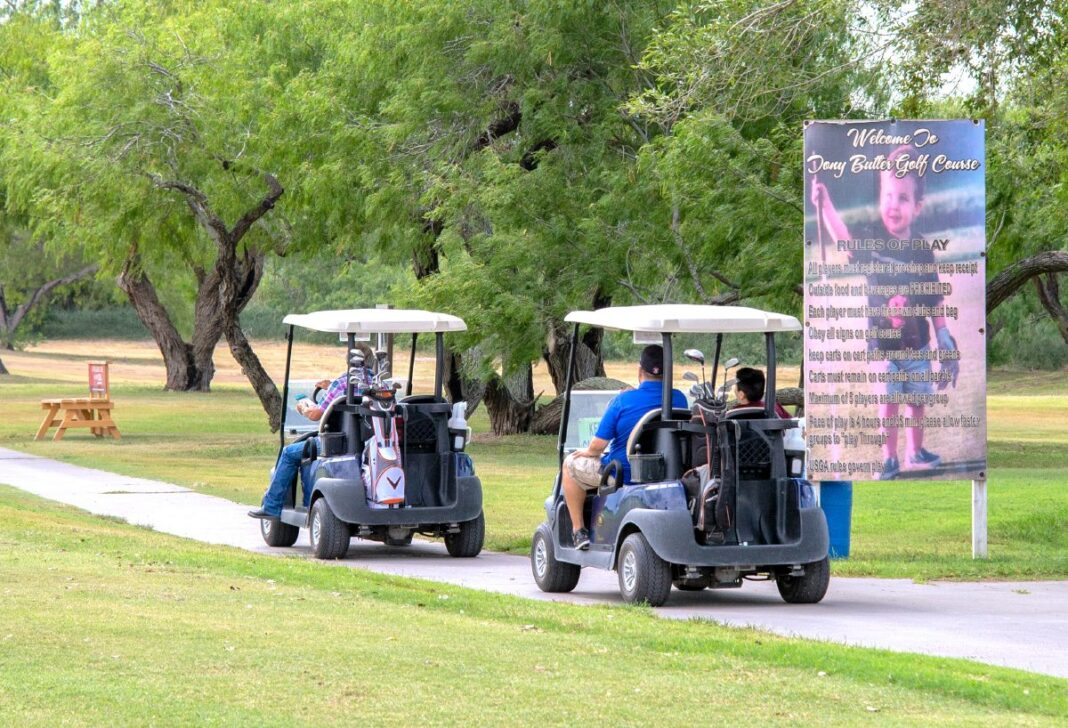HARLINGEN — Winter Texans like Fred Stirek came back to the Tony Butler Golf Course this year, driving up numbers after officials re-opened their favorite nine-hole short course — the venerable Executive Nine.
But the boost in revenue fell short of figures posted during the same period in 2019 as officials work to draw players back to the golf course which has run in the red for about 10 years.
“There are a lot of people who like playing it because it’s a little shorter,” Stirek, a retired drywaller from Omaha, Neb., said Friday. “A lot of women and older guys like playing it.”
Meanwhile, local golfers also came back to the short course which the city’s past administration closed on April 1, 2020, as part of move to cut maintenance costs.
On Nov. 1, officials re-opened the nine-hole short course after the new city commission agreed to pump money into reviving the Executive Nine to help draw Winter Texans back to the course.
“The front nine and the back nine were packed so we go down to the Executive Nine,” Saul Gonzalez, a businessman, said. “It’s awesome. The greens are good. They opened it just in time for the Winter Texans so it really did help. It’s great.”
Winter Texan season outpaces last year’s
From November through March, the Executive Nine drew golfers who played 2,072 green-fee rounds, while members played 1,318 rounds, along with students’ high numbers of rounds, Jeff Hart, the golf course’s general manager, stated.
Meanwhile, Tony Butler’s 27-hole course drove in $504,331 in overall revenue while golfers played a total of more than 29,000 rounds from Oct. 1 through March 23, he stated.
“Golf is booming right now — and the course is better,” Hart, who took over in late 2019, said.
This year, the golf course’s Winter Texan season outpaced the previous year’s, when the course generated $468,495 in revenue, with golfers playing more than 22,000 rounds, he stated.
It was Tony Butler’s biggest Winter Texan season since 2019, when the golf course racked up $507,538 in revenue.
Sprucing up the Executive Nine
Along the Executive Nine, Hart’s working to spruce up some holes which had been closed after the past administration shut down the short course.
While golfers like Gonzalez hailed the short course’s revival, Stirek described holes 19 to 22 as scruffy.
“We’re disappointed with them not getting the back nine fixed up,” he said. “The fairways just turned to weeds and the holes you can barely putt off.”
Across the short course, Hart said he’s worked on holes 21 and 22.
Now, he’s planning to help revive holes 19 and 20.
From April 2020 to late last year, city officials barred him from keeping up the four holes while they were closed off, Hart said.
“They’re in pretty bad shape,” he said, referring to holes 19 and 20. “It’s definitely because they were closed for a year-and-a-half and I wasn’t allowed to water or fertilize or anything. We’re going to be working on them this summer to get them back in shape but it’s going to take a while.”
Reviving the short course
Last year, the new commission agreed to re-open the short course after the past commission closed the holes to cut maintenance costs while mulling the sale of a 30-acre tract running across holes 19 to 23, prime land along Interstate 69’s frontage road with an estimated value of about $5 million.
At the time, officials were counting on using the money to fund upgrades to the golf course as part of their plan to draw golfers back.
But they turned up a decades-old resolution restricting the land’s use to parks and recreation, Commissioner Frank Puente said, adding voters would have to decide whether the city could sell the land.
In their budget, officials set aside $343,156 to cover start-up costs including repairs to the golf course’s irrigation system along with upgrades to its greens.
Meanwhile, officials projected the short course’s annual costs would run about $174,000.
Based on Commissioner Frank Morales’ request, officials tweaked the golf course’s point-in-sale software to track the numbers of golfers playing the Executive Nine.
Background
Commissioners have been counting on the re-opening of the short course to help draw more players — and money — to help Tony Butler pay for itself.
Last year, financial reports showed the golf course generated $666,986 in revenues while racking up $983,470 in expenditures, leaving a shortfall of $316,484.
According to city reports, the golf course has run annual deficits ranging from $419,713 in fiscal year 2015-2016 to $223,731 in 2018-2019.
After running shortfalls for nearly 10 years, the golf course’s total deficit stood at $846,548 last year, a report showed.




